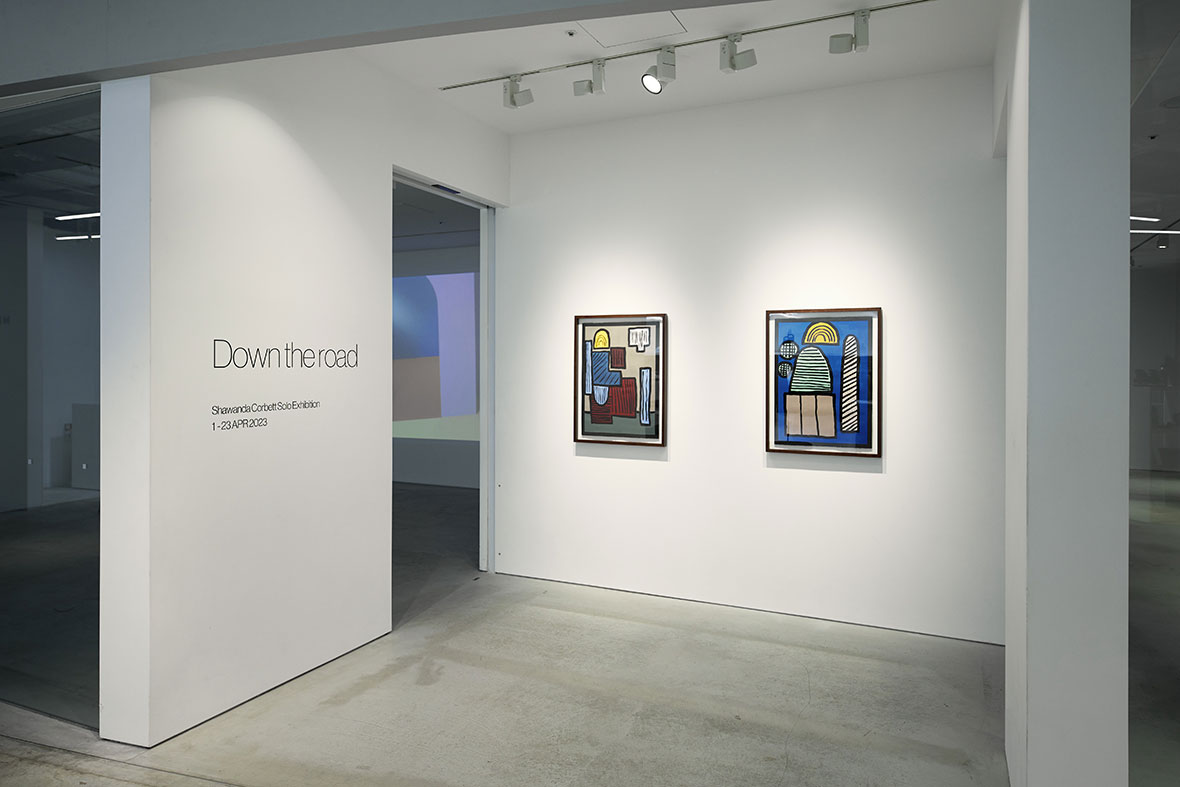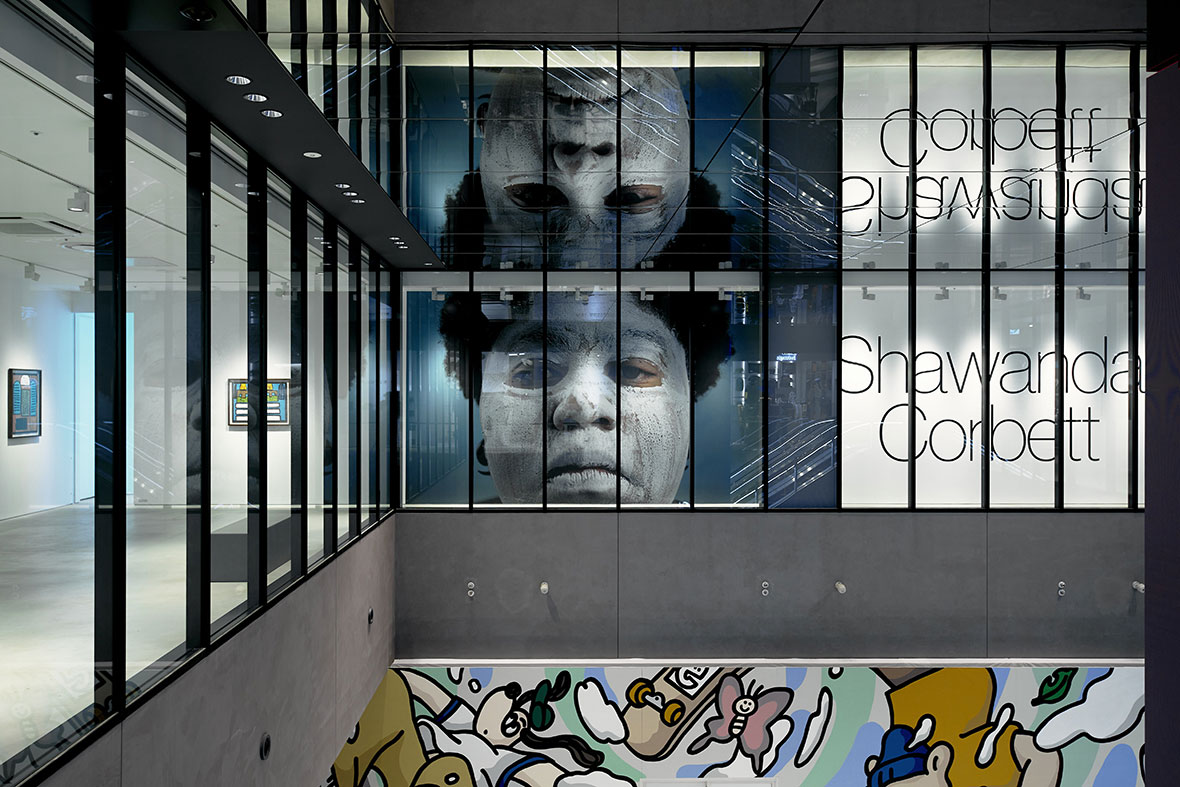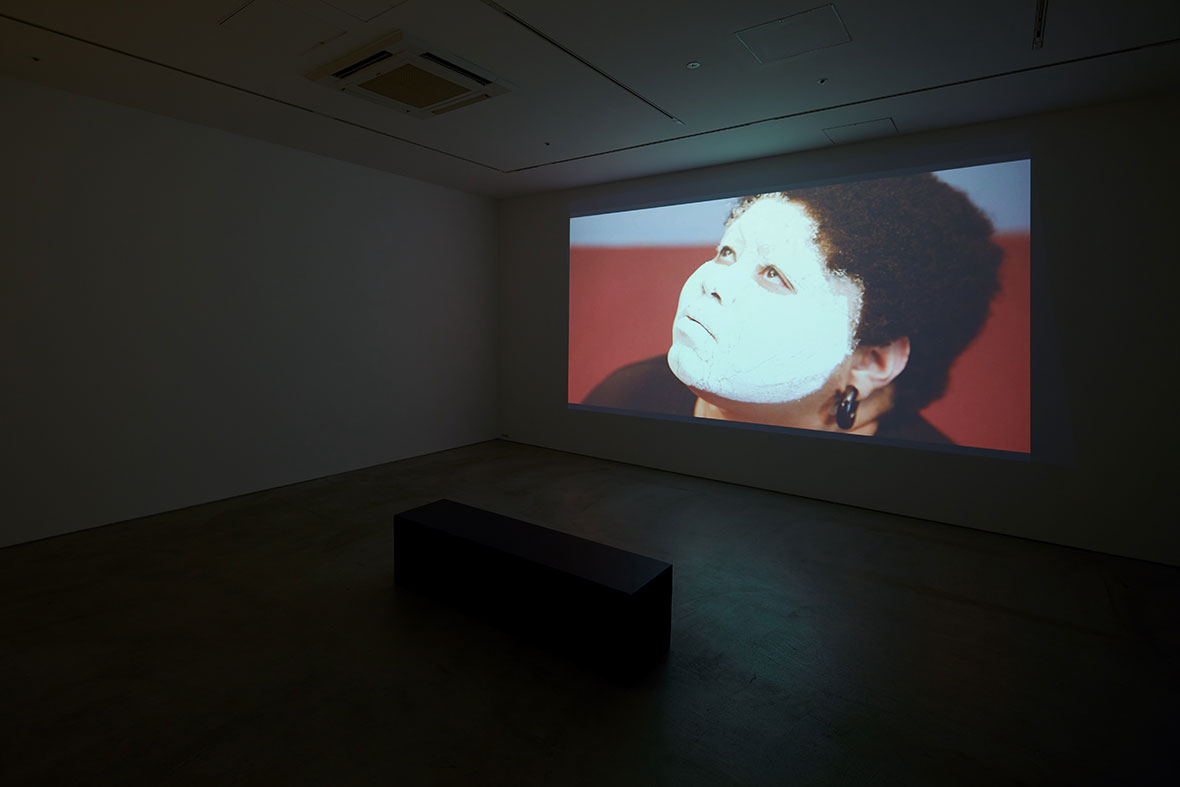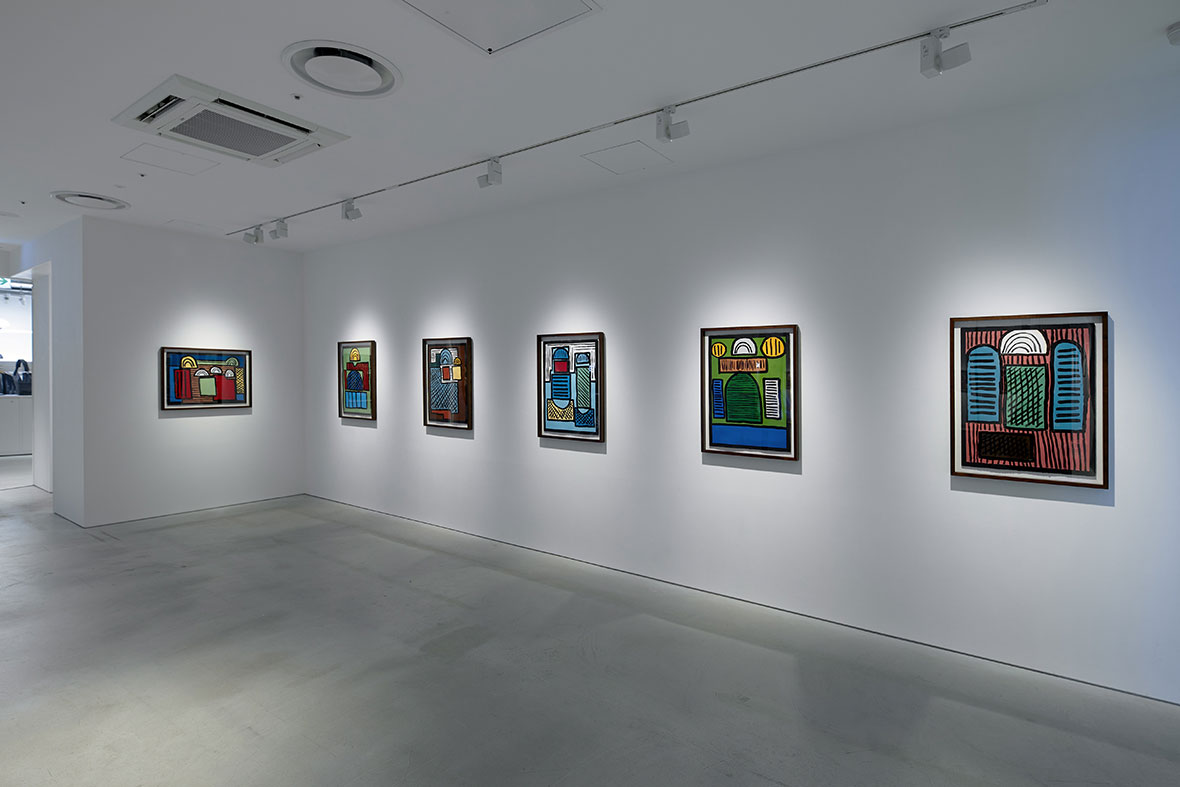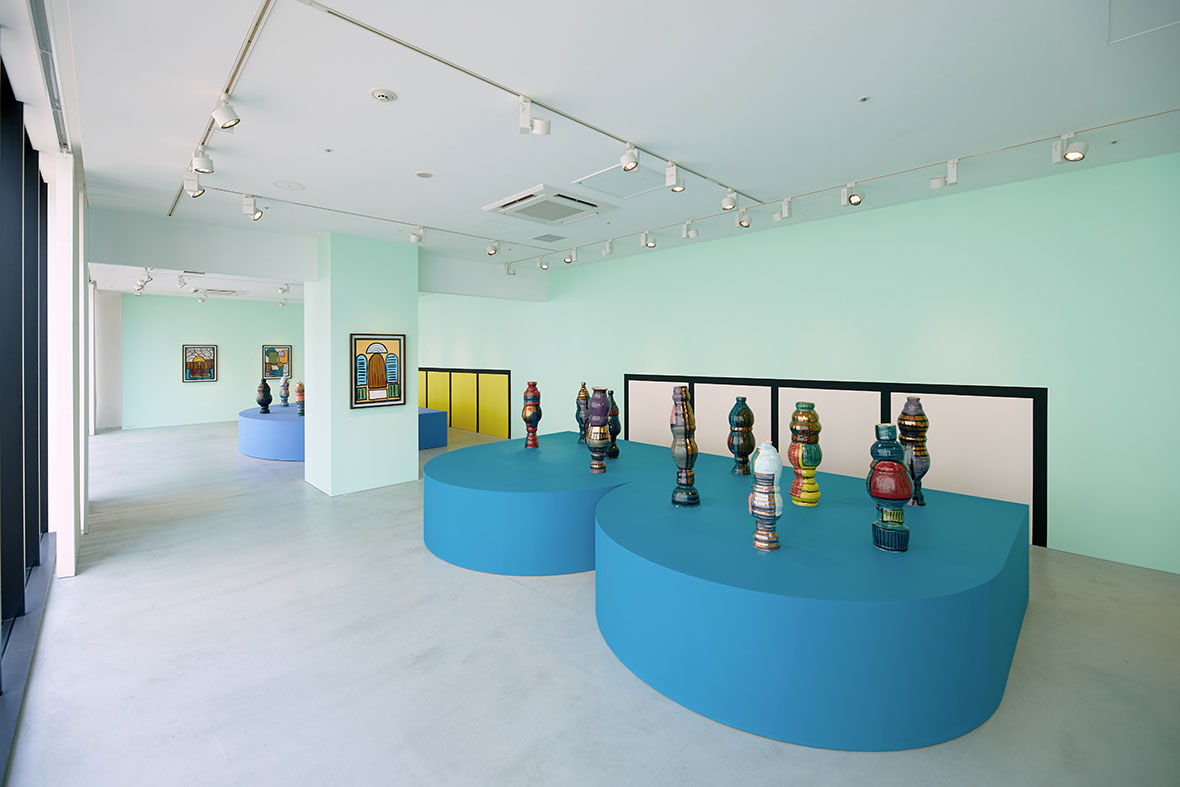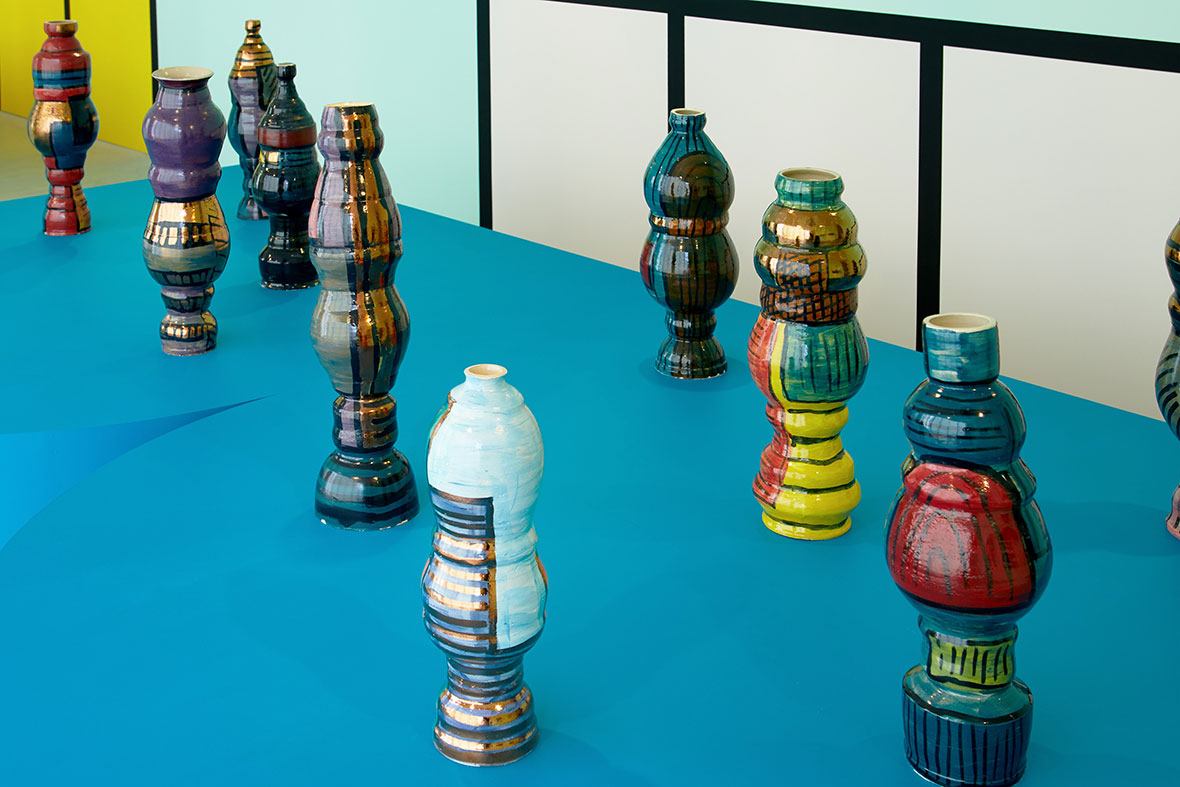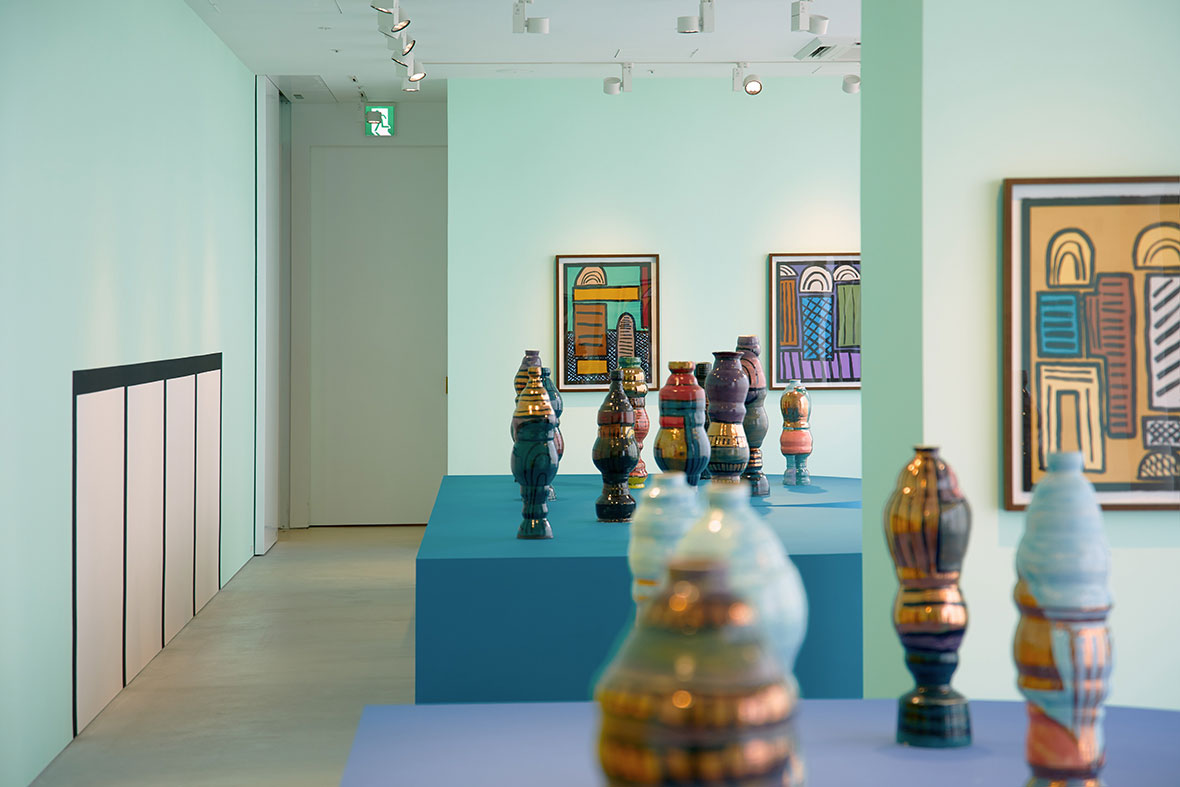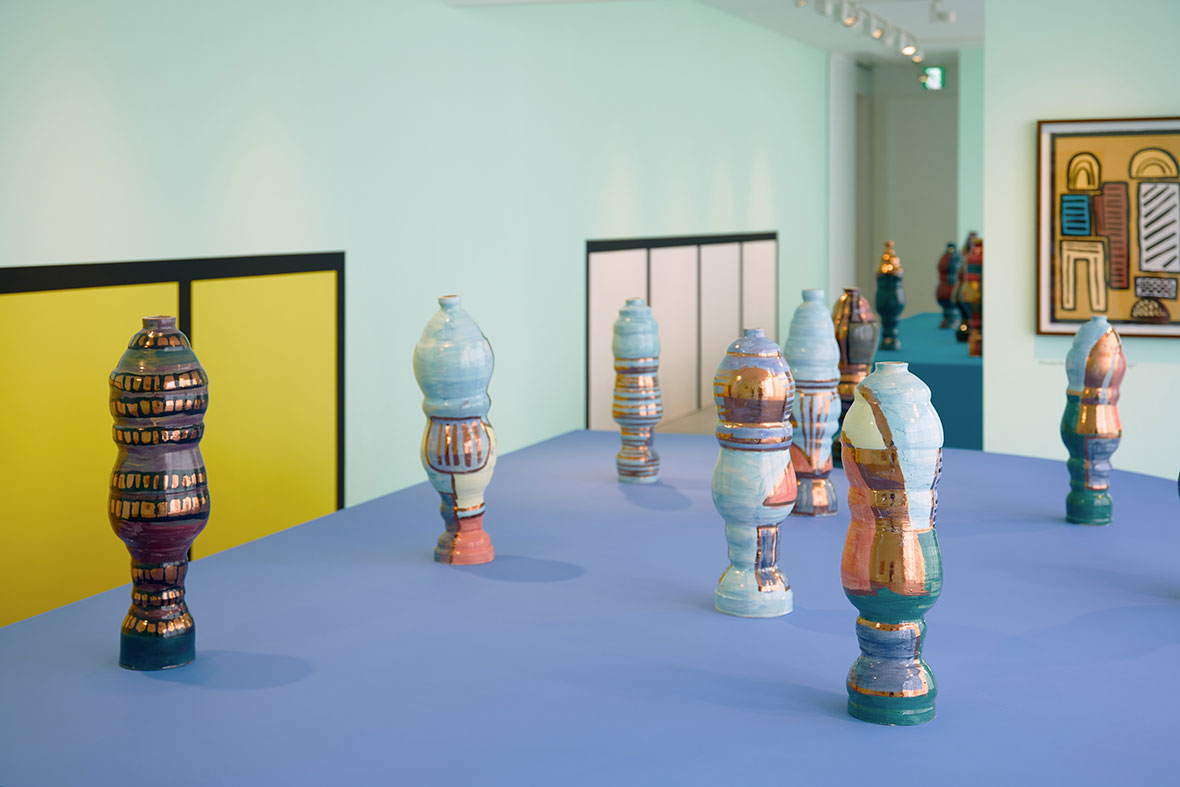Shawanda Corbett Solo Exhibition:
Down the road
2023 04.01 – 04.23
Overview
このたびSAIでは、アメリカ出身アーティストShawanda Corbett(シャワンダ・コーベット)の個展「Down the road」を2023年4月1日(土)から4月23日(日)まで開催いたします。アメリカ出身で現在はロンドンを拠点に活動している彼女は、陶器、絵画、写真、映像、音楽からパフォーマンスまで多様なメディアを横断することによって複合的に創作活動を展開し、これまでに無いイメージを導き出しながら、記憶、経験といった考えや身体と空間との相互作用について探究しています。これまで2021年にTateのターナー・バーサリーとクラインワート・ハンブロス・エマージング・アーティスト賞を受賞。2022年にはテート・ブリテンや、Salon94(現LGDR)で個展を開催するなど、西洋のアートシーンにおいて今まさに躍進し続ける気鋭のアーティストとして注目されています。
コーベットの制作におけるアカデミックな側面は、ドナ・J・ハラウェイ氏の代表的なエッセイ「サイボーグ宣言」(1985年)にそのルーツを見出します。同文は、〈人間〉と〈動物〉、〈人間〉と〈機械〉の間に構築された境界を否定し、現代の技術社会の発展によって、我々は本質的に〈サイボーグ〉であると強調します。コーベットは、有色人種の女性としての自身の視点を用いて、この理論を現実という枠に組み込むことで、完全な身体とは何か、また動物、人間、機械の並存はどのような新しい解釈(ハイブリッド性)をもたらすのか問いかけます。
サイボーグ理論は、表現活動を行う上で間違いなく役に立ちました。サイボーグやロボットについて考える時、異なった部品で構成されながら、互いにはまり合い動き出すことを不思議に感じることがあります。私は色々なメディアで表現をする中で、動きのある表現に重きをおきます。それは、「動き」こそが私の活動のコンセプトだからです。つまり、私の作品というものは私の取り組む物語やコンセプトに最適なメディアを探し出すことなのです。
同理論に対するコーベットの視点は、2022年にロンドンのテート·ブリテンで開催された個展「Let the sunshine in」で上映された初の映像作品『Cyborg theory: the adequacy of tenderness to our antipathy』の基礎となりました。同作は、オスカー・シュレンマーの『Triadisches Ballet』から構想を得たダンスシーンを軸に、8幕から成るミュージカル作品です。作中では身体の動きに作用する建築物を身につけたパフォーマー達が、アフリカ系アメリカ人としての体験を探索する姿が窺えます。また、本作はコーベットの活動を理解するための入口となるものであり、本展中でも上映され、コーベットの世界観を体感する大きな役割を果たすでしょう。
本展覧会タイトル「down the road(ダウン・ザ・ロード)」とは、コーベットが育った南ミシシッピでよく耳にした言葉であり、アフリカ系アメリカ人の老人らが交わしていたミシシッピ訛りの会話の追憶から由来しました。それは特定のものを意図しない曖昧な方向性を示す言葉であり、そのニュアンスはコーベットの育ったコミュニティを凝縮するかのように表現します。本展を構成する、映像から陶器と絵画まで合計41点の豪華な作品群の多くは、ミシシッピでの記憶や体験から生まれており、また、作品を彩る色と線のフォルムは、記憶に残る人物の個性や、関わり合いによって呼び起こされた感情、あるいは制作中に聴くジャズの影響によって、コーベット自身の中にある物語を象徴的に描き出します。
そんな《あなたには新しい人がいる、だから私は泣いている(スキップ·アベニューのとある女性)》、《私は自分で歩いて帰れる(スキップ·アベニューのある女性)》といった陶器に付けられた各タイトルは、彼女の作品の登場人物を知るための窓口になり、文脈、背景、歴史に違いがあるにもかかわらず、観る者にコーベットの記憶に内在する物語の情景を連想させてくれます。
「Skip Avenue(スキップ・アベニュー)」は、さまざまな人々に出会える場所です。近所ではないのですが、かつて私自身が住んでいたエリアにある通り(道)になります。作品はそこで出会った人々を表現しており、私が彼らをどのように覚えているか、彼らの性格や彼らの周りにいることでどのように感じたかを表現しています。これは純粋な感覚です。彼らがどのように見えるか、どのような服を着ていたのかを想像しているわけではありません。それよりも、彼らとの思い出が大切なのです。例えれば、それぞれの器は一貫して同じではなく、似て非なるものである。それについては、よりその時の状況が物語ってくれます。これら作品での登場人物は女性の割合が多くても、男性も特定のタイプを表しています。私の作品は女性らしさ、男性らしさ、子供らしさ、そしてそれら全ての既成概念の比喩とは違ったかたちで表現しているのです。
このように、コーベットの作品に内在するユーモア溢れる温かさは、これまで関わってきた人物に対するコーベット自身の愛情を示すものであり、彼女にとって、どこでもある感覚と繋がりに対する欲求は、作品の根底を形成しているのではないでしょうか。コーベットの記憶や体験は極めて個人的なものでありますが、それらを様々な感情に落とし込むことで、体験への共感を促し、アーティストと鑑賞者の垣根を越え、展示空間にいる私たちをそっと包み込んでくれるでしょう。
Sai is pleased to present ‘Down the road’, a solo exhibition by Shawanda Corbett, her first exhibition in Japan and Asia. Corbett is a London-based, American artist with a uniquely interdisciplinary practice that encompasses ceramics, painting, photography, film, music and performance. Working with these diverse materials and media, it is through the relationship and interplay between these various forms that Corbett is able to explore ideas of memory, human experience and the interaction between the body and the spaces they occupy.
Corbett’s interdisciplinary practice finds its roots in Donna J. Haraway’s seminal text ‘A Cyborg Manifesto’ (1985), which rejects the constructed boundaries between ‘human’ and ‘animal’, and ‘human’ and ‘machine’, emphasising that we are all essentially ‘cyborgs’ thanks to modern technology and society. Corbett uses her perspective as a woman of colour with different abilities to frame this theory in reality, questioning the idea of what a complete body is and how animal, man and machine co-exist side-by-side to form a hybrid body.
For Corbett, the term ‘cyborg’ allows her to channel these various identities and perspectives that provide the freedom to form a perspective that is entirely hybrid in nature. This sense of hybridity and freedom is evident in her approach to work, with the many components of her practice interweaving to form a multifaceted totality.
‘Cyborg theory definitely helped me to form my practice. When you think about cyborgs or robots, they are complete sections but they fit together. I do many different things and I like to move about because it is a concept…so it is about finding the best medium that fits that concept the best.’
Corbett’s perspective on the concept of the cyborg formed the basis of her first film work ‘Cyborg theory: the adequacy of tenderness to our antipathy’, that was shown at her solo exhibition ‘Let the sunshine in’ at London’s Tate Britain in 2022. The film is a musical score in eight acts with choreographed dance scenes that take inspiration from Oskar Schlemmer’s Triadisches Ballet. The film sees Corbett and other performers explore elements of the Black experience whilst wearing architectural forms that change the movements of the wearer’s body. The musical score was written by Corbett and choreographed by her brother Albert, a dancer and choreographer with whom she regularly collaborates for her performance works. This film provides an entrypoint into understanding Corbett’s multi-stranded practice, and the often difficult or complex themes that she addresses within her works. The film will be on display at the exhibition at SAI, acting as an introduction to the world of Shawanda Corbett.
Corbett’s works often draw from personal memories and experiences of growing up in the Southern state of Mississippi, with her ceramic works and paintings forming symbolic representations of the figures and people from her past. The forms of colour and lines that adorn these surfaces are informed by the personality of the people in her memories and the feelings they evoke within her, as well as the influence of the jazz music she listens to as she works.
For this exhibition, Corbett continues to draw inspiration from her past, with the exhibition title ‘Down the road’, making reference to the specific area and street where these figures resided. ‘Down the road’ is a common phrase that Corbett recalls she often heard voiced by the older African American members of her community, who would pronounce the words in their distinct Mississippi accent. The phrase itself is an ambiguous indication of direction that signifies neither up, down, left or right, but is instead a turn of phrase that holds significant memories and encapsulates the environment in which she grew up.
The titles of the individual works themselves also provide a window into the lives of these characters, with the ceramic vessels having titles such as; ‘You have someone new, that’s why I’m crying (From: “The Women of Skip Avenue”)’,or ‘I can walk myself home (From: “The Women of Skip Avenue”)’. Despite the differences in context, background and collective histories between artist and viewer, the phrases conjure evocative vignettes that allow the viewer to imagine the scene and the person portrayed, giving voice to the ceramic forms.
‘Skip Avenue’ is a place where you meet a lot of different characters. It’s not a neighbourhood, it's just a street and in that area you identify with the street you lived on. The works in the exhibition are representations of these characters and how I remember them, their personality and how being around them made me feel. It is purely feeling. It is not imagining what they look like or how they dressed. For this, it was more about the memory of them. The different vessels, for example, are not consistently the same but are similar and not related to the other. For that it speaks more to the circumstances. For this specific work it is very women heavy and a specific type of male. It’s like depicting different tropes of womanhood, male-hood, childhood and what it means to be all those things.’
Corbett’s affection for these figures is evident in the works and they exude a sense of warmth and humour that is universal. For Corbett, it is this sense of universality and a desire to communicate that is the main motivation for her practice. Though highly personal to her own memories and experiences, by transforming these memories into a range of emotions, her works transcend various barriers to appeal to a common platform of feeling that encourages empathy and inclusivity.
Download Press Release >
-
/
You didn't see me hugged up with no one (From: “The Women Of Skip Avenue”)
68 × 19 × 19 cm, Glazed Stoneware, 2022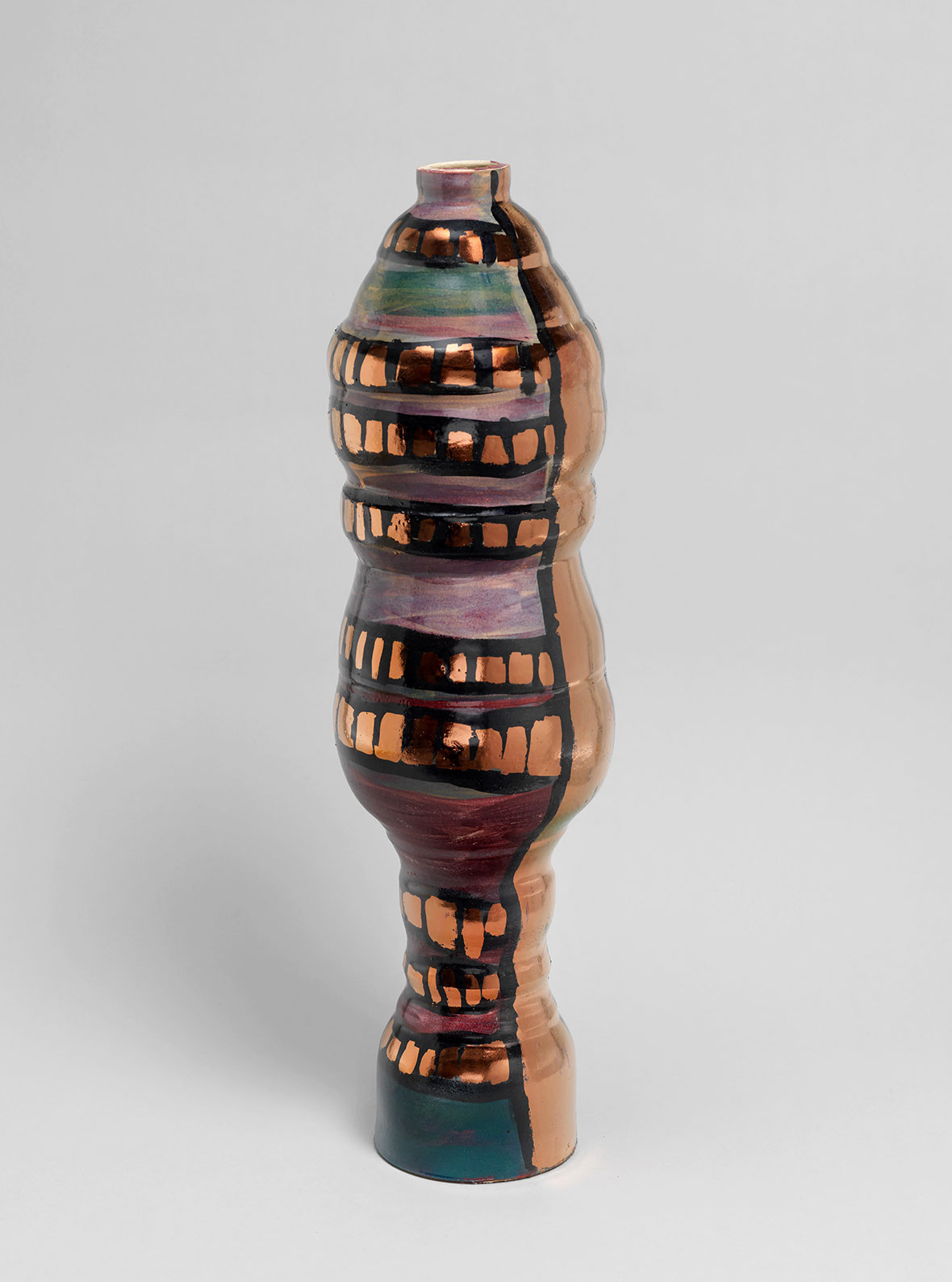
-
/
He's your son (From: “The Women Of Skip Avenue”)
66 × 19 × 19 cm, Glazed Stoneware, 2022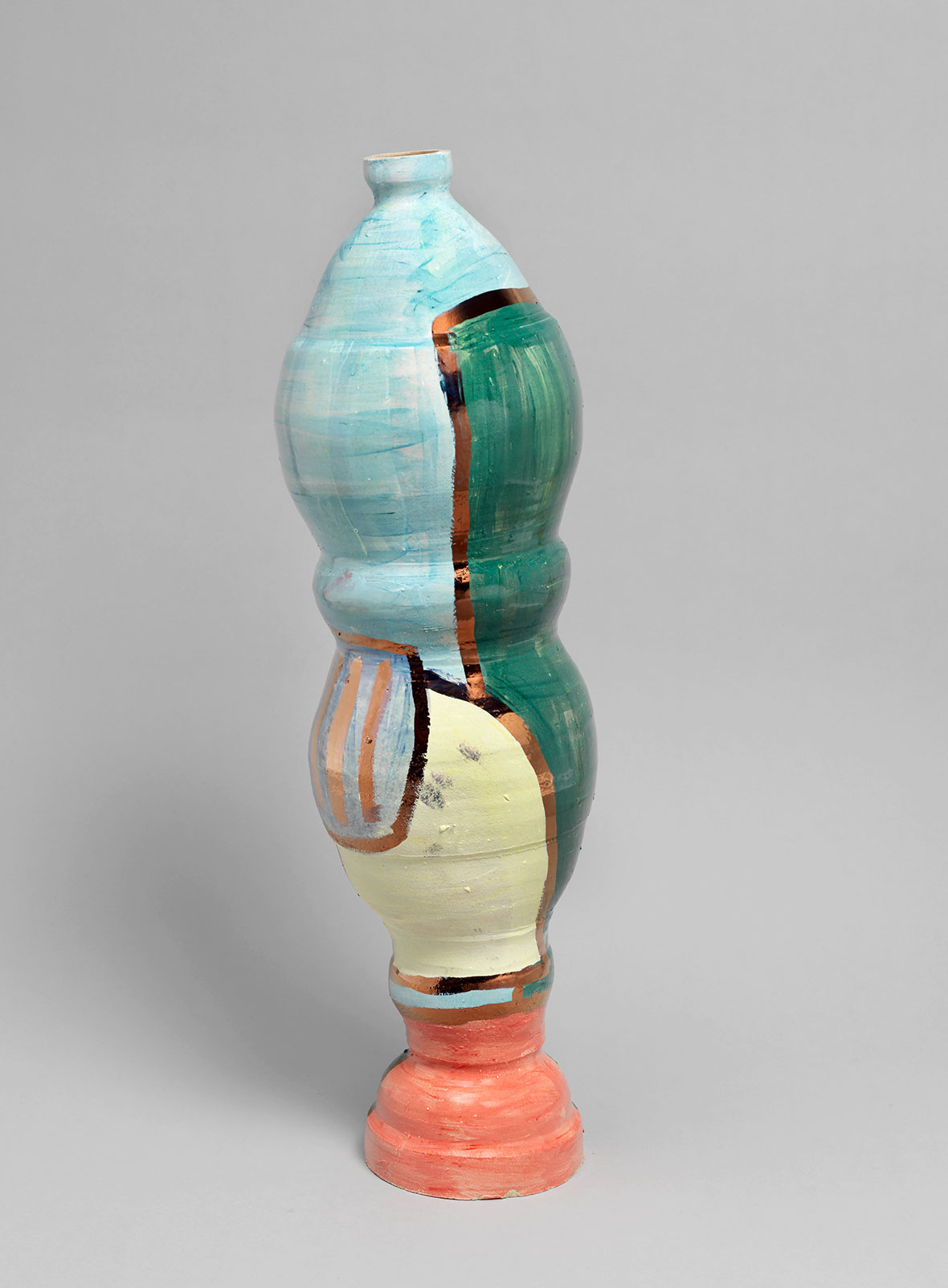
-
/
I’m your elder, you have to respect me
77.5 × 56cm, Acrylic on Paper, 2022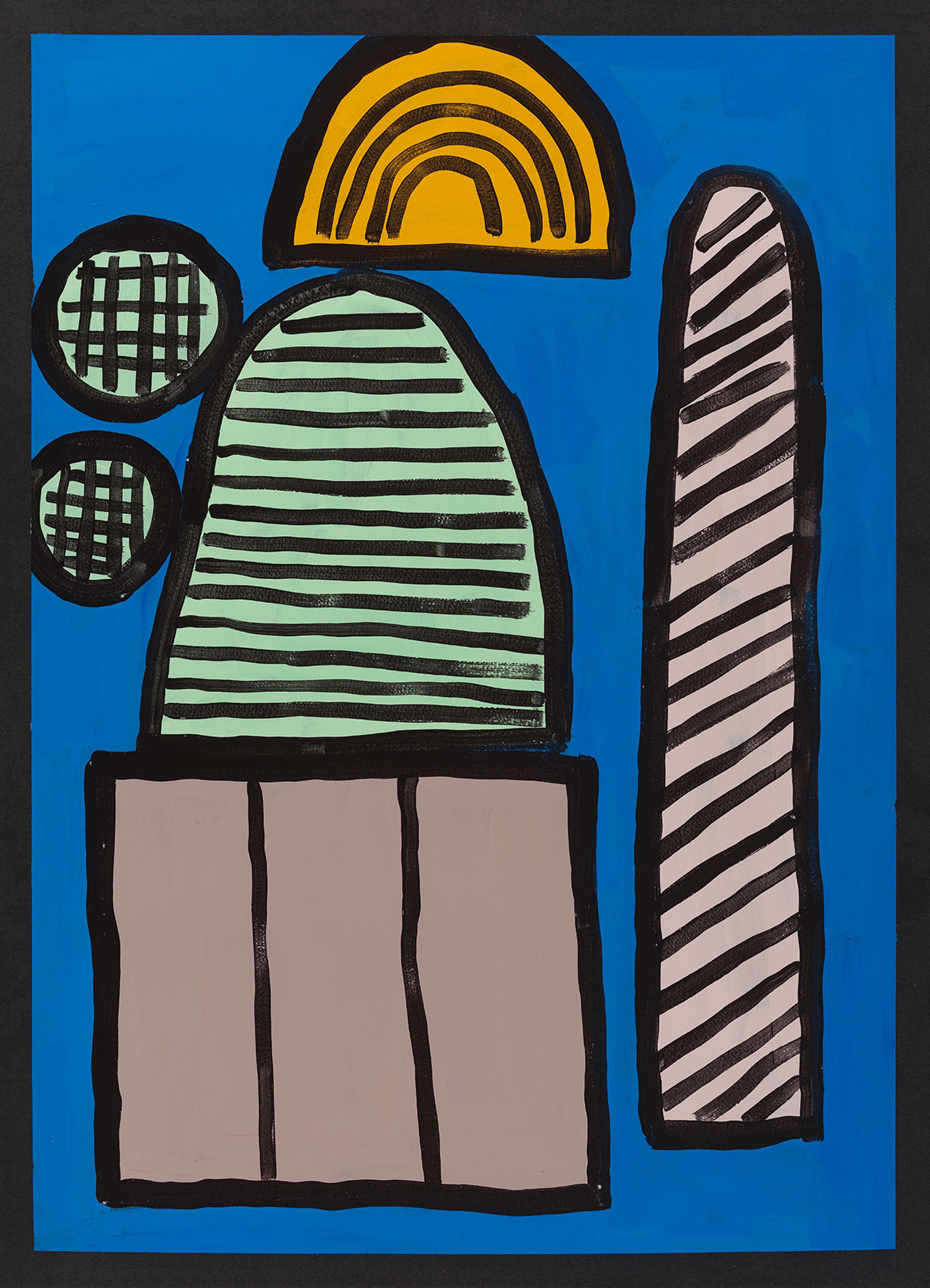
-
/
Me and the boys
77.5 × 56cm, Acrylic on Paper, 2022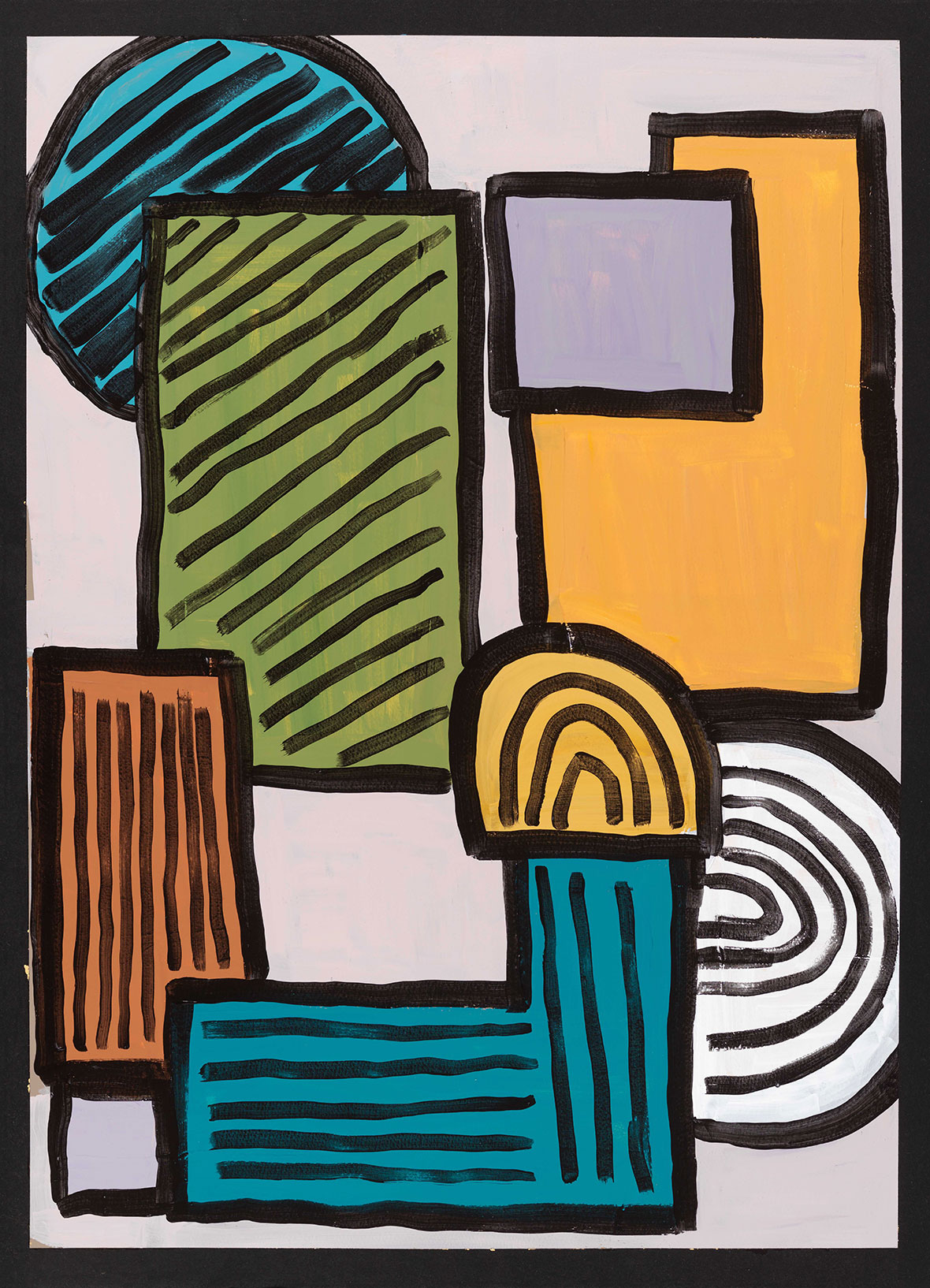
-
You didn't see me hugged up with no one (From: “The Women Of Skip Avenue”)
68 × 19 × 19 cm, Glazed Stoneware, 2022
-
He's your son (From: “The Women Of Skip Avenue”)
66 × 19 × 19 cm, Glazed Stoneware, 2022
-
I’m your elder, you have to respect me
77.5 × 56cm, Acrylic on Paper, 2022
-
Me and the boys
77.5 × 56cm, Acrylic on Paper, 2022

